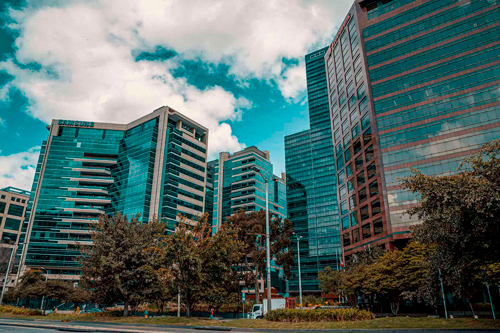
BH USAQUÉN HOTEL
The BH Usaquén Hotel is located on one of Bogotá's main avenues, Carrera Séptima, very close to cultural heritage sites and a wide gastronomic offer in the Usaquén area. Its 88 exclusive contemporary-style rooms and 2 lounge spaces are designed to exceed guests' expectations.
BH PARQUE 93 HOTEL
The Hotel BH Parque de la 93 has elegant decorations and pleasant areas. It also has 60 minimalists, bright rooms with a view of the city and furnished for a comfortable visit for leisure or business trips, located 4 minutes from Parque de la 93 and famous stores. The hotel has a gym, sauna, 3 meeting rooms, a business center and security services.
EK HOTEL
EK Hotel was designed for business people and is located in the north of Bogota, 5 minutes away from Parque de la 93. 70 elegant rooms that combine design and comfort and a terrace with an incredible view. Enjoy the modern exercise room and tasty preparations in the Café Bar. The hotel has 2 spaces-rooms for business meetings with state-of-the-art technology to provide a unique experience.
MERCURE BH RETIRO HOTEL
The Mercure BH Retiro Hotel is located just 5 minutes away from renowned shopping malls, very close to the Zona T, one of the most exclusive entertainment areas of the city: a variety of restaurants, bars and nightclubs of the highest level. The hotel has 53 luxurious rooms, gym, sauna, 2 meeting rooms and qualified staff for a pleasant stay.
BH LA QUINTA HOTEL
Located in one of the most exclusive neighborhoods in the north of Bogota, the BH La Quinta Hotel combines elegant and stylish English architecture with a modern and contemporary design. 30 exclusive rooms designed to exceed expectations; 2 meeting rooms, a restaurant, gardens and a lobby with several intimate areas for socializing.
BS ROSALES HOTEL
BS Rosales Hotel is an option you should consider after a business or leisure trip. Located a few steps from the financial center of Bogota, on Calle 72 and close to the most diverse gastronomic offerings in the Zona G. This place has 49 sophisticated rooms and 3 meeting rooms. A family atmosphere to enjoy your stay.
Hotel Mercure bh Zona Financiera
Mercure Bogotá BH Zona Financiera es una gran alternativa, gracias a su ubicación cercana a centros comerciales y reconocidos restaurantes de la Zona G. El lugar ofrece un ambiente familiar en sus 62 habitaciones totalmente equipadas. El hotel cuenta con 1 espacio-sala para reuniones, gimnasio y guarda equipaje.
CITÉ HOTELS
With its privileged location in the north of Bogota, close to the Zona Rosa, Cité Hotel is a benchmark with a portfolio of services that includes 3 lounge spaces and 56 rooms with a broad view of the Parque El Virrey and the city. The place offers spaces favorable for a pleasant stay, and a wide gastronomic offer in the Bistró restaurant and leisure areas.
POP ART DE TOCANCIPÁ HOTEL
In the heart of Bogotá's Sabana, the Pop Art Tocancipá Hotel is inspired by the most important artistic trend of the 20th century. The place offers 153 luxury rooms, spacious small squares with green areas, and 4 spaces-rooms for events with high-quality standards. It also has a restaurant, gym, spa, sauna and games room for a magnificent experience.
JW MARRIOTT BOGOTA HOTEL
The JW Marriott Hotel offers comfort, elegance and good taste, located in the heart of Bogota's financial center and close to the entertainment area in the north of the city. JW Marriott has 264 luxurious Spanish-style rooms and suites and 10 versatile meeting rooms for high-level events.